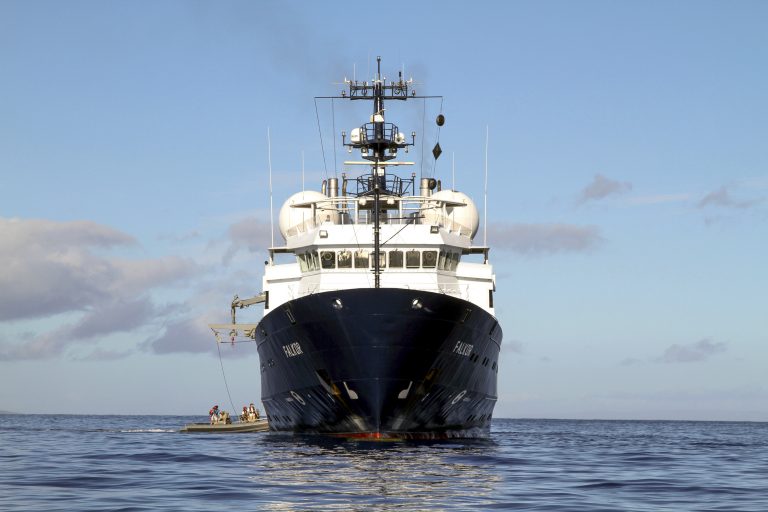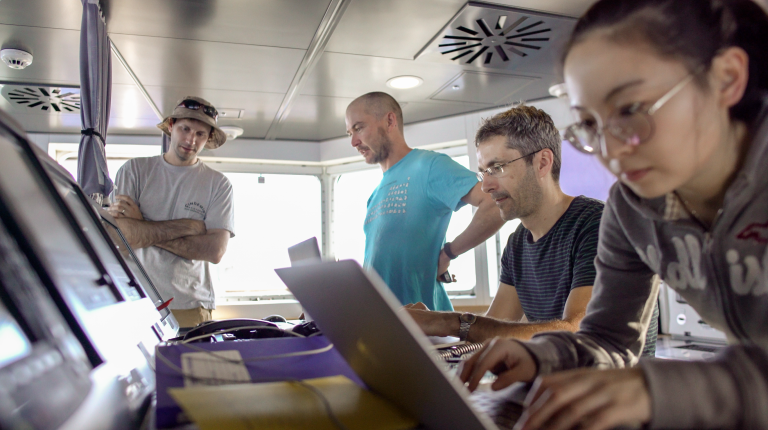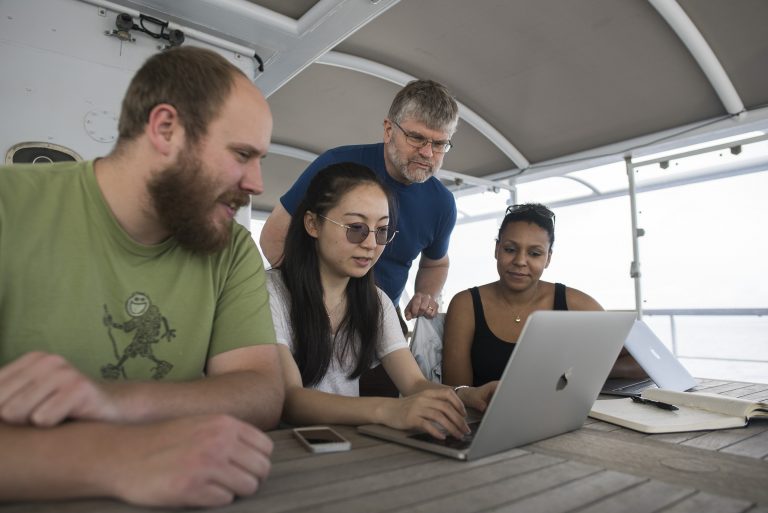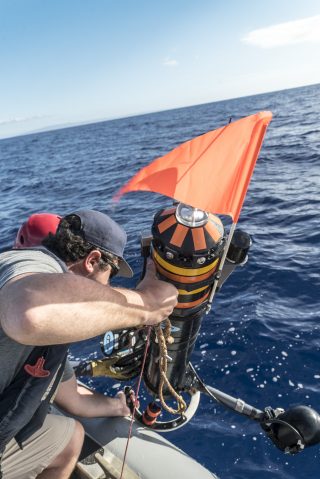Falkor’s boats rotate around her tirelessly through the day. Professor Stefan Williams, from the University of Sydney, knows how important it is to test the vehicles in open ocean, and how crucial it is to have access to a capable research vessel. “Often ship-time on a vessel like this would be very tied to the science goals, so the ability to test out new technologies and do developmental work would be very limited,” he says, “Whereas Falkor and SOI are very focused on developing new technology capabilities that would accelerate the pace of marine studies. To have access to a ship like this, to deploy vehicles and try things out, while bringing together professional teams to work together in the field is great.”

The coordination between science party and crew runs non-stop, as all underwater vehicles must be deployed and recovered continuously in order to calibrate and test them, making sure they are ready for the next stage of the expedition. A planning platform, named Enterprise as a tribute to Star Trek, will make it possible for the vehicles to carry out missions evaluating the feasibility and hierarchy of predetermined science goals. Not only that, they will also assess the level of risk involved, and adjust accordingly.
Once that is done, the experts will embark on the ambitious task of making the vehicles work in unison. “We will try to connect them and make sure that if one vehicle is working in a particular area, there won’t be redundancy: there won’t be wasted effort, there will be some ability to be robust at failures,” explains Dr. Oscar Pizarro, Chief Scientist. “Those are the things that having multiple vehicles operating in some coordinated fashion – rather than independently – buys you: the promise of an overall system that is sampling and observing the ocean, that can manage itself to some degree and still produce good results without people having to be making decisions at every level of the process.”

Command
Once each vehicle is working properly in the new environment of ‘Au ‘Au Channel, it will be need to be integrated into the system. To do so, the Enterprise will yield control to its capable team: Captain Kirk, Sulu, Scotty, and of course, Spock.
Sulu, the Pilot, will plan the motion of each vehicle, while dealing with risk. Scotty, the Engineer, oversees the motion and coordinates the vehicles. Spock, Science Officer, optimizes each vehicle’s effort by analyzing the science as it is acquired, and adjusting the mission if necessary. Finally, Captain Kirk oversees all missions and coordinates them all.
The planning software’s core objective is to find more efficient and cost-effective ways of studying the oceans. One important step will be to optimize the time and effort of large research vessels such as Falkor. “We’re working on the activity planner so it can decide which vehicle is going to work on a particular science goal, and then the planner will create the routes for each one of them. Then there’s the path planning so we are sure that the vehicles won’t collide with each other. Furthermore, we want to coordinate with the Falkor. The system will decide at which point should Falkor deploy a vehicle, and then go and drop off the next one,” explains Dr. Williams, computer scientist. The system would free human minds from logistic concerns, and enable them to invest their time in more worthy tasks.
Back on land, Dr. Williams’ team has already made it possible for robots to communicate and update each other constantly, thus adjust to changing conditions. During the Coordinated Robotics expedition, however, the robots will not be able to communicate with Falkor once they are underwater. That is why if a vehicle encounters a problem, it will surface and establish a connection to the computer server onboard, receiving an updated plan and going back down.


The Human Touch
One very interesting aspect of Dr. Williams’ research (and a fundamental part of developing a tool that will enable humans and machines to work together) is understanding human behavior. Over the course of the next three weeks, students will learn from Falkor’s crew and from each vehicle’s operators, and try to understand how the decision-making process of the human mind works, especially when it comes to Autonomous Underwater Vehicles.
“This expedition gives us an opportunity to start talking to all the other teams and start integrating our software into their system,” says Dr. Williams, “but a lot of this ends up being – not only how you control the vehicle – but how you shouldn’t operate or interact with the vehicle. So we need to understand how the scientists today are interacting with the vehicle to try to help their process. We must also understand how the crew interacts with them.”
Just like the starship Enterprise, the system has the capability to engage on a dialogue with its human counterpart. The planning platform could determine that a mission is too risky, or that there are too many science goals, for instance. It would then make recommendations to the human operator, explaining the reasons why it cannot carry out the assignment and suggesting solutions. The operator would then decide, or continue back and forth, until an acceptable agreement is reached. In Star Trek, the Enterprise will not be built for another 300 years, yet in reality it starting to work right now, with every immersion of the robots in the ‘Au ‘Au Channel.

